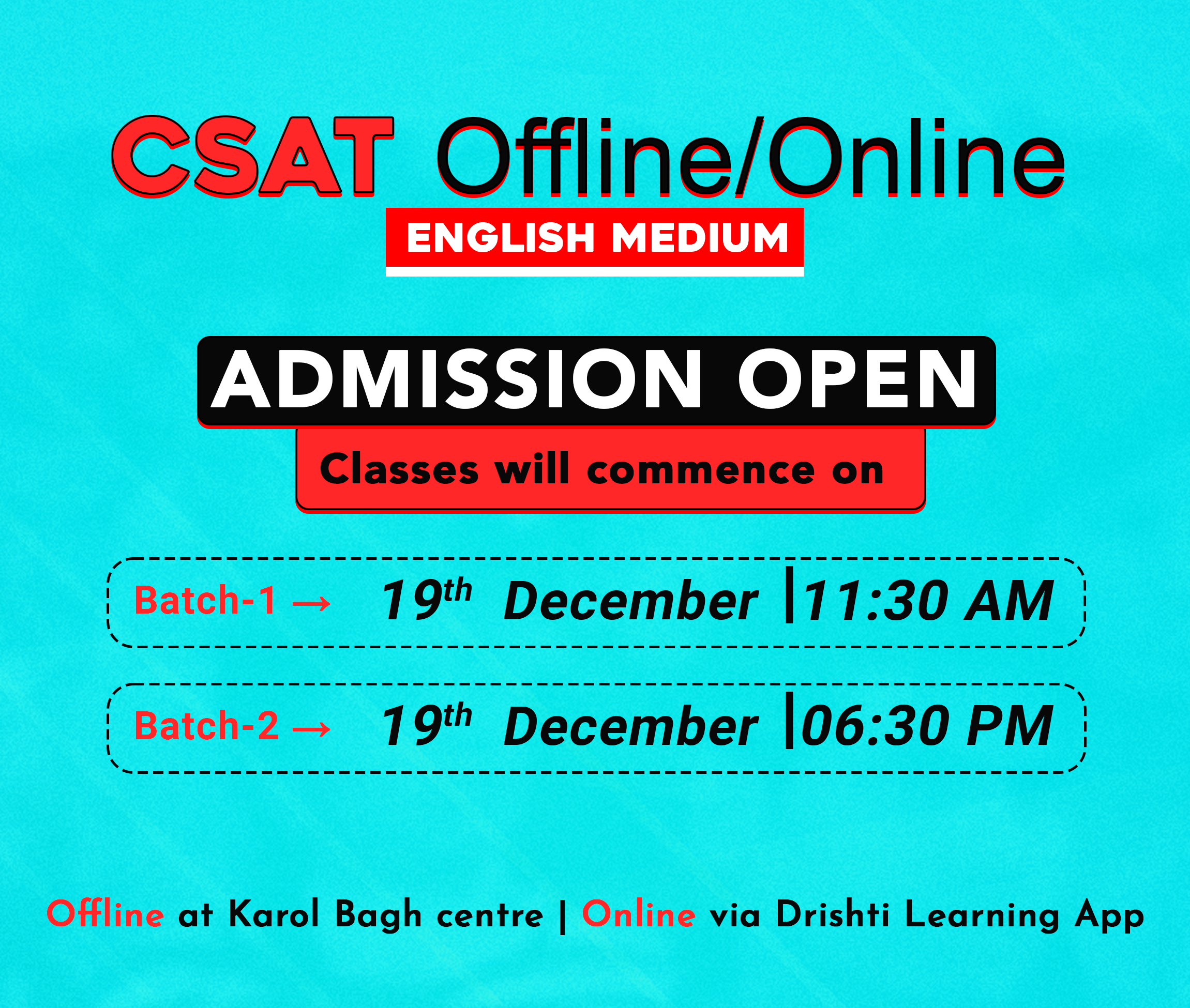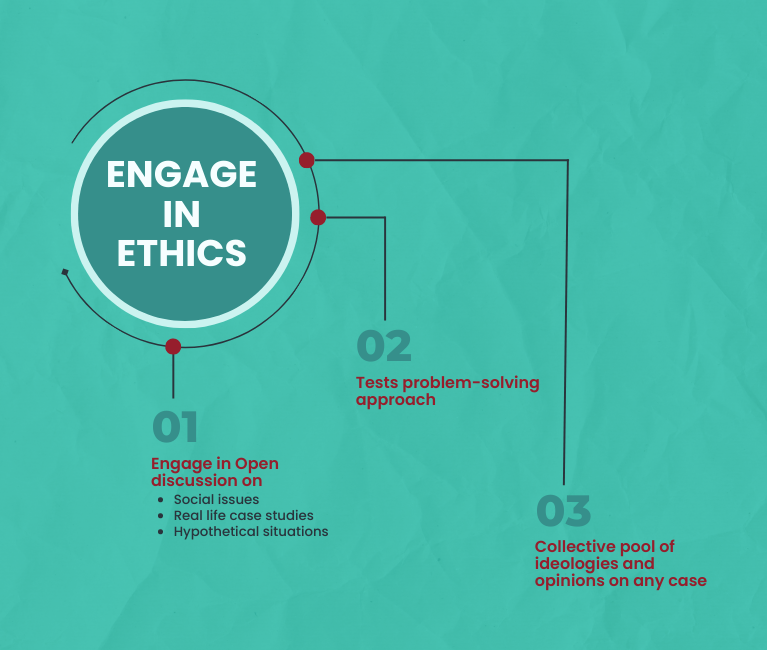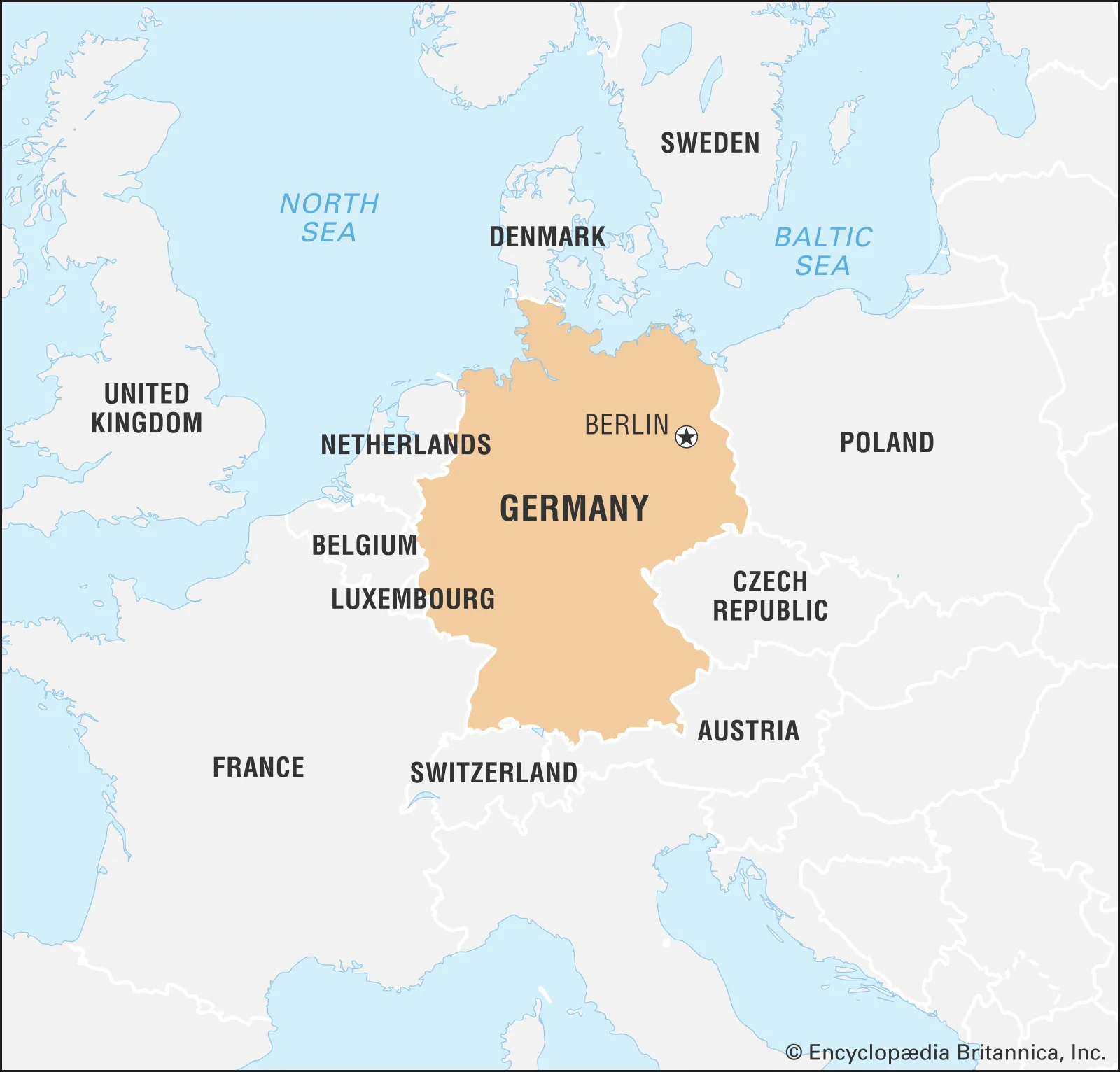Infographics
International Relations
India Germany Relations
For Prelims: India Germany Relations, Oil Price Cap, G7, European Union
For Mains: India-Germany Relations, Scopes of Cooperation between India and Germany
Why in News?
Recently, the External Affairs Minister of India met with the Foreign Minister of Germany in New Delhi.
- Germany’s minister’s visit coincided with the launch of an “oil price cap” plan by the G7 and European Union countries to withdraw shipping and insurance services to countries that buy Russian oil above the price of USD 60 a barrel.
What are the Key Highlights of the Meeting?
- India and Germany signed a Comprehensive Partnership on Migration and Mobility meant to ease travel for research, study and work for people in both countries.
- It would be the “basis for a more contemporary partnership” to relations.
- The two sides held talks on bilateral issues, including Germany’s assistance to India on renewable energy and energy transitions, as well as international issues such as their IndoPacific strategy, and spoke about China, Afghanistan and Pakistan.
What is the Oil Price Cap by the G7?
- About:
- It is a plan by the G7 with the European Union and Australia to impose the price cap on Russian crude oil shipments, pegged at USD 60 to a barrel for now.
- The price cap is essentially aimed at preventing firms in signatory nations from extending shipping, insurance, brokering and other services to Russian crude oil shipments that are sold at any value above the designated per-barrel price i.e., USD 60 per barrel.
- Since it came into effect on 5th December 2022, the cap will only apply to shipments that are “loaded” onto vessels after the date and not apply to shipments in transit.
- India’s Stand:
- Despite the United States-led sanctions on Russia post its invasion of Ukraine, India has decided to not just continue with, but also double its trade with Moscow in the “near foreseeable future”.
- India’s consumption of Russian oil was just one-sixth of European consumption and should not be compared unfavourably, defending the government’s decision to increase its intake of Russian oil since the war in Ukraine.
- Despite the United States-led sanctions on Russia post its invasion of Ukraine, India has decided to not just continue with, but also double its trade with Moscow in the “near foreseeable future”.
How has the India Germany Relations been?
- India-German Ties:
- The bilateral relations between India and Germany are founded on common democratic principles. India was amongst the first countries to establish diplomatic ties with the Federal Republic of Germany after the Second World War.
- Germany cooperates with India to the tune of 1.3 billion Euros a year in development projects, 90% of which serves the purpose of fighting climate change, saving natural resources as well as promoting clean and green energy.
- Germany has also been supporting the construction of a huge solar plant in Maharashtra with a capacity of 125 Megawatt which generates annual CO2 savings of 155,000 tons.
- After the appointment of new Chancellor of Germany in December 2021, India and Germany agreed that as major democracies and strategic partners, they will step up their cooperation to tackle common challenges, with climate change on top of the agenda.
- Economic Cooperation - A Challenge:
- There is a problem of the lack of a separate bilateral investment treaty between the two countries. Germany has a Bilateral Trade and Investment Agreement (BTIA) with India via EU, it does not have the competence to negotiate it separately.
- Also, Germany is particularly sceptical about India’s trade liberalization measures, it bats for more liberal labour regulations.
- Indo-Pacific Region - Significance:
- The Indo-Pacific, with India as its centrepiece, looms large in Germany’s and the European Union’s foreign policy.
- The Indo-Pacific region is home to around 65% of the global population and 20 of the world’s 33 megacities.
- The region accounts for 62% of global Gross Domestic Product (GDP) and 46% of the world’s merchandise trade.
- It is also the source of more than half of all global carbon emissions which makes the region’s countries key partners in tackling global challenges such as climate change and sustainable energy production and consumption.
- Germany and Indo-Pacific:
- Germany is determined to contribute to buttressing the rules-based international order.
- Within the German Indo-Pacific guidelines, India is mentioned for the enhancement of engagement and fulfilment of objectives. India should now be an important node while discussing issues relating to international security.
- India is a maritime powerhouse and a strong advocate for free and inclusive trade — and, therefore, a primary partner for Germany (eventually the EU) on this mission.
What should be the Approach Moving Forward?
- Strengthening Indo-German Relations:
- Germany views India as an important partner for resolving global issues, including climate change, food security, energy and international peace and security.
- Also, the new coalition government formed in Germany offers an opportunity for India to strengthen the strategic partnership between the two.
- Germany is keen to implement connectivity projects, through the European Union, to counter China. The coalition sees the conclusion of an India-EU BTIA as an important aspect that will help develop relations.
- Scope of Economic Cooperation:
- India and Germany must realise the cooperative goals of the Intellectual Property guidelines and must involve businesses.
- German companies must be encouraged to use the liberalised Performance Linked Incentive scheme to establish manufacturing hubs in India.
- Germany has committed 250 million euro in loans to Africa for a vaccine production facility, if implemented with India such a facility can be established in the underserved East African region.
- Sharing Responsibilities in the Indo-Pacific Region:
- As much as India, Germany is a trading nation. More than 20% of German trade is conducted in the Indo-Pacific neighbourhood.
- This is why Germany and India share a responsibility to maintain and support stability, prosperity and freedom in this part of the world. Both India and Europe’s key interests are at stake when championing a free and open Indo-Pacific.
- As much as India, Germany is a trading nation. More than 20% of German trade is conducted in the Indo-Pacific neighbourhood.
UPSC Civil Services Examination, Previous Year Question (PYQ)
Q. ‘Broad-based Trade and Investment Agreement (BTIA)’ is sometimes seen in the news in the context of negotiations held between India and (2017)
(a) European Union
(b) Gulf Cooperation Council
(c) Organization for Economic Cooperation and Development
(d) Shanghai Cooperation Organization
Ans: (a)


Governance
Vizhinjam Port Project
For Prelims: Adani port in Vizhinjam, PPP
For Mains: Issues and Challenges in Development Projects in India
Why in News?
Recently, Adani Group approached the Kerala High Court requesting the security cover of central forces in its port construction site in Vizhinjam which was marred by violent protests by the Fishermen.
What is the Vizhinjam Port Project?
- About:
- It is a Rs 7,525 crore port, being built under a Public Private Partnership (PPP) model with Adani Ports Private Limited at Vizhinjam near Thiruvananthapuram, Kerala.
- It was laid in December 2015 and has since missed its completion deadline.
- The port is to have 30 berths, and will be able to handle giant “megamax” container ships.
- Significance:
- It is believed that the ultramodern port, located close to major international shipping routes, will boost India’s economy and its location is also of strategic importance.
- The port is expected to compete with Colombo, Singapore, and Dubai for a share of trans-shipment traffic.
- The port’s advantages are “availability of a 20m contour within one nautical mile from the coast, minimal littoral drift along the coast, hardly any maintenance dredging required, links to national/regional road, rail network, and proximity to international shipping routes.
Why are Fishermen Protesting?
- Fisherfolk have been protesting against the project for the past four months, alleging that its construction is causing massive sea erosion, taking away their livelihood and dwellings.
- They want an impact study conducted and the project to remain suspended until the study report comes out.
- The fishing community has also put forward six other demands:
- Rehabilitation of families who lost their homes to sea erosion
- Effective steps to mitigate coastal erosion
- Financial assistance to fisherfolk on days weather warnings are issued
- compensation to families of those who lose their lives in fishing accidents
- Subsidised kerosene
- A mechanism to dredge the Muthalappozhi fishing harbour in Anchuthengu in Thiruvananthapuram district.
- The kerosense subsidy has been demanded by claiming that because of the project, fishermen have to venture deeper into the ocean for catch, increasing the fuel cost burden.
UPSC Civil Services Examination, Previous Year Question (PYQ)
Q. Recently, which of the following States has explored the possibility of constructing an artificial inland port to be connected to sea by a long navigational channel? (2016)
(a) Andhra Pradesh
(b) Chhattisgarh
(c) Karnataka
(d) Rajasthan
Ans: (d)
Exp:
- The State of Rajasthan is developing an artificial inland port in Jalore which would be connected to the Arabian Sea by developing a channel along the Kutch Creek.
- The Inland Waterway Authority of India (IWAI) proposed to guide and support the Rajasthan government for building this port.
- Therefore, option (d) is the correct answer.


Governance
Stubble Burning
For Prelims: Stubble Burning, Turbo Happy Seeder (THS) machine, CAQM, Air Pollution.
For Mains: Impacts on Stubble Burning.
Why in News?
According to the Commission for Air Quality Management (CAQM), fire count from Stubble Burning in Delhi and the NCR (National Capital Region) has reduced by 31.5% in 2022 as compared to 2021.
- As compared to 2021, stubble burning decreased in Punjab, Haryana, and Uttar Pradesh by 30%, 47.60%, and 21.435% respectively in 2022. The fire counts are based on information from NASA (National Aeronautics and Space Administration) Satellites.
What caused the Reduction in Stubble Burning?
- State governments went for both in-situ and ex-situ management and a special campaign was started to honour the farmers who did not burn stubble.
- In-Situ Treatment of Stubble: For example, crop residue management by zero-tiller machine and Use of bio-decomposers (e.g., Pusa bio-decomposer).
- Ex-Situ (off-site) Treatment: For example, Use of rice straw as cattle fodder.
- About 10 million tonnes of straw had been managed through in-situ management, which is about 25% more than last year in Punjab.
- Similarly, 1.8 million tonnes of straw had been managed through the ex-situ method, which is more than 33% over the previous year.
- Punjab had chalked out an action plan for three years, which has been shared with the central government.
What is Stubble Burning?
- About:
- Stubble (parali) burning is a method of removing paddy crop residues from the field to sow wheat from the last week of September to November, coinciding with the withdrawal of southwest monsoon.
- Stubble burning is a process of setting on fire the straw stubble, left after the harvesting of grains, like paddy, wheat, etc. It is usually required in areas that use the combined harvesting method which leaves crop residue behind.
- It is a common practice in October and November across North West India, but primarily in Punjab, Haryana, and Uttar Pradesh.
- Effects of Stubble Burning:
- Pollution:
- Emits large amounts of toxic pollutants in the atmosphere which contain harmful gases like methane (CH4), Carbon Monoxide (CO), Volatile Organic compounds (VOC) and carcinogenic polycyclic aromatic hydrocarbons.
- These pollutants disperse in the surroundings, may undergo a physical and chemical transformation and eventually adversely affect human health by causing a thick blanket of smog.
- Soil Fertility:
- Burning husk on the ground destroys the nutrients in the soil, making it less fertile.
- Heat Penetration:
- The heat generated by stubble burning penetrates into the soil, leading to the loss of moisture and useful microbes.
- Pollution:
- Alternatives to Stubble Burning:
- Use of Technology- For example Turbo Happy Seeder (THS) machine, which can uproot the stubble and also sow seeds in the area cleared. The stubble can then be used as mulch for the field.
What is Other Related Initiative?
- The State Governments of Punjab, National Capital Region (NCR) States and the Government of National Capital Territory of Delhi (GNCTD) have developed detailed monitorable action plans based on the framework by the CAQM to tackle the problem of air pollution.
What is CAQM?
- CAQM is a statutory body formed under the Commission for Air Quality Management in National Capital Region and Adjoining Areas, Act 2021.
- Earlier, the commission was formed through the promulgation of the Commission for Air Quality Management in National Capital Region and Adjoining Areas Ordinance, 2021.
- The Commission for Air Quality Management in the National Capital Region and Adjoining Areas, Act 2021 also dissolved the Environment Pollution Prevention and Control Authority (EPCA) established in the NCR in 1998.
- It has been set up for Air Quality Management in National Capital Region and Adjoining Areas for better co-ordination, research, identification and resolution of problems surrounding the air quality index and for matters connected therewith or incidental thereto.
Way Forward
- As we know, burning stubble destroys a helpful raw material, pollutes the air, causes respiratory diseases and worsens greenhouse gas emissions. Therefore, the need of the hour is to make constructive use of stubble as animal feed and further utilise technology by enabling various alternatives like Turbo-Happy Seeder Machine and Bio-Decomposer etc.
- Stubble can be recycled to make products including paper and cardboard.
- Also, it can be used as a manure. For example, in Palla village outside Delhi, the Nandi Foundation purchased 800 MT of paddy residue from farmers to turn it into manure.
- Crop residue can also be used for various purposes like charcoal gasification, power generation, as industrial raw material for production of bio-ethanol.
UPSC Civil Services Examination, Previous Year Question (PYQ)
Q. Mumbai, Delhi and Kolkata are the three mega cities of the country but the air pollution is much more serious problem in Delhi as compared to the other two. Why is this so? (2015)


Governance
Dharavi Redevelopment Project
For Prelims: Dharavi Redevelopment Project, Dharavi.
For Mains: Recent Initiatives Related to Urban Development.
Why in News?
The Bombay High Court (HC) seeks the Dharavi redevelopment project authority’s reply to Public Interest Litigation (PIL) for removal of Mahim Nature Park from the Dharavi Redevelopment Project.
- Mahim Nature Park is a protected forest under Indian Forest Act, 1927.
What is Dharavi Redevelopment Project?
- Dharavi Redevelopment Project is the makeover of Mumbai’s slum cluster, Dharavi.
- The project was initially mooted in 2004, but never got off the ground due to various reasons.
- Recently, the Adani Group won the bid for this project.
- It entails resettling 68,000 people, including slum dwellers and those with commercial establishments.
- The rehabilitation construction cost is estimated at 23,000 crore.
- A special purpose vehicle (SPV) is to be formed, with Adani as the lead partner.
- Adani will hold 80% equity in the SPV while the state government will hold 20%.
- The SPV will construct free housing for eligible slum residents, with amenities and infrastructure such as water and power supply, sewage disposal, piped gas, etc.
What is Dharavi?
- Dharavi is the biggest slum cluster of Asia that lies on prime property right in the middle of Mumbai.
- It is spread over 300 hectares, of which the state government has notified 240 hectares for the project.
- It was founded in 1882 at the time of British Raj.
- During the 18th century, unplanned localities started to grow when the process of urbanization of Mumbai was going on.
- Half-a-million people or so, live in Dharavi.
- Apart from the currently estimated 56,000 families, it houses tens of thousands of small commercial establishments, ranging from pottery to leather work.
- But living conditions are quite poor, given the density and the lack of many basic amenities.
What are the Recent Initiatives Related to Urban Development?
UPSC Civil Services Examination, Previous Year Questions (PYQs)
Prelims
Q. Local self-government can be best explained as an exercise in (2017)
(a) Federalism
(b) Democratic decentralisation
(c) Administrative delegation
(d) Direct democracy
Ans: B
Exp:
- Democracy means decentralisation of power and giving more and more power to the people. Local self governments are looked upon as instruments of decentralisation and participatory democracy.
- To examine the working of the Community Development Programme (1952) and the National Extension Service (1953) and to suggest measures for their better working, the GoI appointed a committee in January, 1957 under the chairmanship of Balwant Rai G Mehta.
- The committee submitted its report in November, 1957 and recommended the establishment of the scheme of ‘democratic decentralisation’, which ultimately came to be known as Panchayati Raj or unit of Local Self Government.
- Therefore, option B is the correct answer.
Mains
Q. Do government’s schemes for up-lifting vulnerable and backward communities by protecting required social resources for them, lead to their exclusion in establishing businesses in urban economies? (2014)


Social Justice
Entry of Women in Masjids
For Prelims: Right to Equality, Islamic Laws on Ban on Women’s Entry
For Mains: Legal Issue in Ban on Entry of Women, Right to Equality
Why in News?
Recently, the Jama Masjid in Delhi prohibited the entry of single women or women in groups inside the mosque premises and withdrew after the intervention of Lieutenant-Governor.
- The authorities reasoned that some women fail to respect the sanctity of the place of worship, making videos etc.
What is the Islamic Law on Women’s Entry?
- Islamic Law:
- The Quran, at no place prohibits women from going to mosques for prayers.
- Wherever the Quran talks of establishing prayer, it talks in gender neutral terms.
- Before the five daily prayers, a prayer call or azaan is pronounced.
- The azaan is a general invitation to both men and women for prayers, reminding the faithful, ‘Come for prayer, come for success’.
- The Quran, at no place prohibits women from going to mosques for prayers.
- Global Scenario:
- Across West Asia, there is no ban on women coming to the masjid for prayers.
- In the U.S. and Canada too, women access mosques for prayers, and even gather there for special Taraweeh prayers in Ramzan and lessons on religion.
- National Scenario:
- In India, only a handful of mosques maintained or owned by Jamaat-e-Islami and the Ahl-e-Hadith sect have provisions for women worshippers.
- Most mosques, while not expressly forbidding women’s entry in masjids, have no provision for women to do ablutions for prayer or a separate prayer zone for them.
- They are built keeping only men in mind.
- Under the circumstances, they are reduced to a ‘men only’ zone.
- Opinion of Scholars:
- Most Islamic scholars agree that a prayer can be offered at home but can only be established in a group, hence the importance of going to a mosque.
- Most also agree that women have been exempted, not prohibited from going to the mosque, keeping in mind their child-rearing and other domestic responsibilities.
What is the Legal Issue behind the Ban?
- According to the Constitution of India, there is complete equality between men and women.
- In the Haji Ali Dargah case too, the High Court quoted Articles 15, Article 16 and Article 25 of the Constitution to grant women the desired access to the dargah.
- There are petitions filed before the Supreme Court wherein access has been sought for women in all mosques across the country.
- The apex court has clubbed them with the Sabarimala case.
Have there been Similar Bans Before?
- Back in 2011, a grill was put up on the premises of the vastly popular 15th century dargah, Haji Ali Dargah in Mumbai, prohibiting women from going beyond it.
- Following this, some women approached the dargah management for redress.
- However, with the requests having been denied, they started a campaign, ‘Haji Ali for All’, winning over more women in the process.
- Led by the Bharatiya Muslim Mahila Andolan, the women approached the Bombay High Court which ruled in their favour in 2016.


Important Facts For Prelims
Semeru Volcano of Indonesia
Why in News?
Recently, Semeru volcano erupted in Indonesia’s Eastern Java Island.
What is Semeru Volcano?
- Semeru - also known as "The Great Mountain" - is the highest volcano in Java and one of the most active.
- It previously erupted in December, 2021.
- Indonesia, with the maximum number of active volcanoes in the world, is prone to seismic upheaval due to its location on the Pacific’s Ring of Fire.
- Semeru volcano is also part of the Island arcs formed by the subduction of the Indo-Australian plate below Sunda Plate (part of the Eurasian Plate). The trench formed here is called the Sunda trench whose major section is the Java Trench.
What is Pacific Ring of Fire?
- The Ring of Fire, also referred to as the Circum-Pacific Belt, is a path along the Pacific Ocean characterized by active volcanoes and frequent earthquakes.
- It traces boundaries between several tectonic plates—including the Pacific, Cocos, Indian-Australian, Nazca, North American, and Philippine Plates.
What are Island Arcs?
- They are long, curved chains of oceanic islands associated with intense volcanic and seismic activity and orogenic (mountain-building) processes.
- An island arc typically has a land mass or a partially enclosed, unusually shallow sea on its concave side.
- Along the convex side there almost invariably exists a long, narrow deep-sea trench.
- The greatest ocean depths are found in these depressions of the seafloor, as in the case of the Mariana (deepest trench in the world) and Tonga trenches.
- Prime examples of this form of geologic feature include the Aleutian-Alaska Arc and the Kuril-Kamchatka Arc.
What are the Other Volcanoes?
- Recently Erupted:
- Volcanoes in India:
- Barren Island, Andaman Islands (India's only active volcano)
- Narcondam, Andaman Islands
- Baratang, Andaman Islands
- Deccan Traps, Maharashtra
- Dhinodhar Hills, Gujarat
- Dhosi Hill, Haryana
UPSC Civil Services Examination, Previous Year Question (PYQ)
Prelims
Q. Consider the following statements: (2018)
- The Barren Island volcano is an active volcano located in the Indian territory.
- Barren Island lies about 140 km east of Great Nicobar.
- The last time the Barren Island volcano erupted was in 1991 and it has remained inactive since then.
Which of the statements given above is/are correct?
(a) 1 only
(b) 2 and 3
(c) 3 only
(d) 1 and 3
Ans: (a)
Exp:
- Barren Island is India’s only active volcano which is located in the Andaman and Nicobar Islands. Hence, statement 1 is correct.
- It is located at about 140 km from Port Blair, southern part of Andaman Island in Andaman Sea. The distance between Barren Island to Great Nicobar is more than the given distance. Hence, statement 2 is not correct.
- First recorded eruption of the volcano dates back to 1787. In the past 100 years, it has erupted at least five times. Then for the next 100 years, it remained silent. It re-erupted massively in 1991.
- Since then, the eruption has been recorded every two-three years; the latest in the series was February 2016. Hence, statement 3 is not correct. Therefore, option A is the correct answer.
Mains
Q. Discuss the geophysical characteristics of Circum-Pacific Zone. (2020)
Q. Mention the global occurrence of volcanic eruptions in 2021 and their impact on regional environment. (2021)


Important Facts For Prelims
International Cheetah Day
Why in News?
Every year, International Cheetah Day is celebrated on 4th December since 2010.
- Dr. Laurie Marker designated the day as International Cheetah Day in remembrance of Khayam, a cheetah she raised from a cub at Wildlife Safari in Winston, Oregon.
What are the Key Facts about Cheetah?
- The cheetah is one of the oldest of the big cat species, with ancestors that can be traced back more than five million years to the Miocene era.
- The cheetah is also the world’s fastest land mammal that lives in Africa and Asia.
- A majority of the world's 7,000 cheetahs live in South Africa, Namibia and Botswana.
- Namibia has the world's largest population of cheetahs.
- The cheetah is the only large carnivore that got completely wiped out from India, mainly due to over-hunting and habitat loss.
- Eight Cheetahs have been recently reintroduced in India from Namibia to Kuno National Park.
UPSC Civil Services Examination, Previous Year Question (PYQ)
Q. Consider the following: (2012)
- Black-necked crane
- Cheetah
- Flying squirrel
- Snow leopard
Which of the above are naturally found in India?
(a) 1, 2 and 3 only
(b) 1, 3 and 4 only
(c) 2 and 4 only
(d) 1, 2, 3 and 4
Ans: (b)
Exp:
- Black-necked crane is commonly found in Tibetan and trans-Himalayan region. In winters they migrate to less colder regions of Indian Himalayas. It has been evaluated as Near Threatened in IUCN list. Hence, 1 is correct.
- Cheetah is an extinct species in India. They have gone extinct during the pre-independence era mainly due to hunting. By the beginning of the twentieth century, the species was already heading for extinction in many areas. The last physical evidence of the Asiatic cheetah in India was in 1947, in Eastern Madhya Pradesh or Northern Chhattisgarh. It has been evaluated as vulnerable in IUCN list. Hence, 2 is not correct.
- Flying Squirrels are found in Western Ghats, Northeast and other Indian forests. It has been evaluated as least concern in IUCN list. Hence, 3 is correct.
- Snow leopard, listed as vulnerable in IUCN list, is found in the Himalayan ranges. Hence, 4 is correct.
- Therefore, option B is the correct answer.



-01.png)










